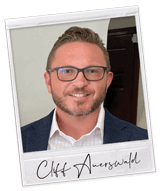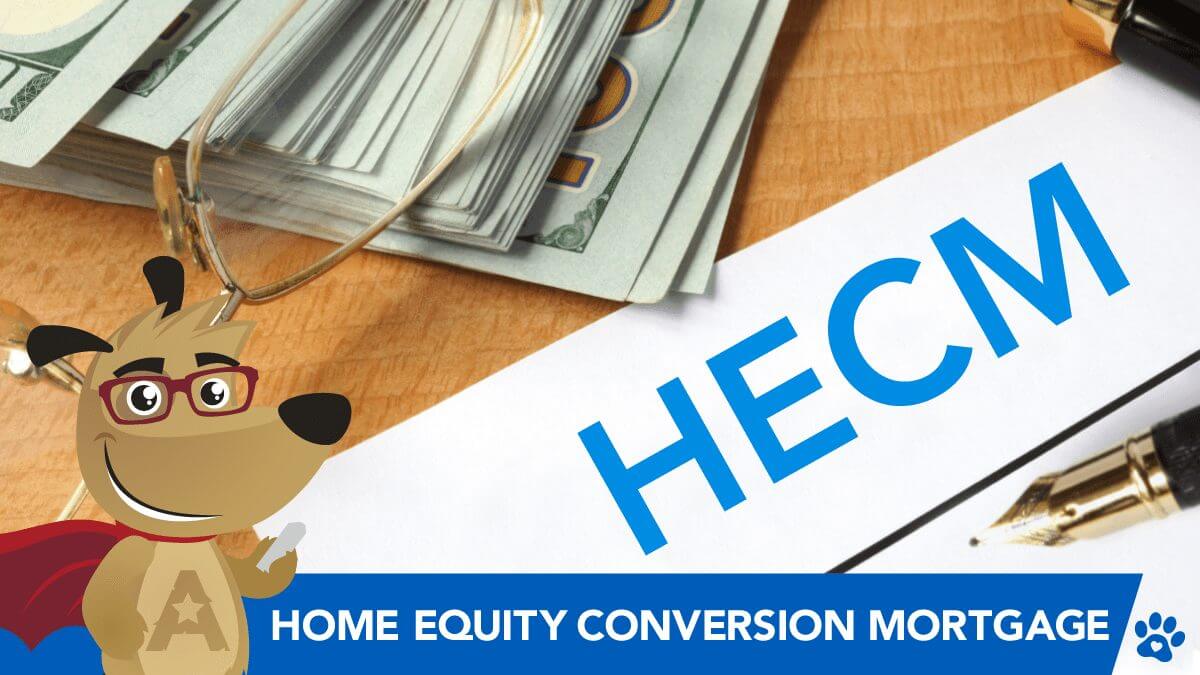
See How a HECM Works for You

 |
ARLO™REVERSE MORTGAGE
ASSISTANT |
HECM Explained: 2026 Home Equity Conversion Mortgage Requirements, Limits & Benefits
 |
Michael G. Branson, CEO of All Reverse Mortgage, Inc., and moderator of ARLO™, has 45 years of experience in the mortgage banking industry. He has devoted the past 20 years to reverse mortgages exclusively. (License: NMLS# 14040) |
 |
All Reverse Mortgage's editing process includes rigorous fact-checking led by industry experts to ensure all content is accurate and current. This article has been reviewed, edited, and fact-checked by Cliff Auerswald, President and co-creator of ARLO™. (License: NMLS# 14041) |
All Reverse Mortgage has specialized in the HECM program for more than twenty years. As a HUD-approved direct lender, we originate HECM loans under the same federal rules described in this guide, and we believe homeowners deserve clear, factual guidance from a knowledgeable source. That has always shaped the way we explain the reverse mortgage program, starting with our first customer, Marian Branson.
What Is a HECM (Home Equity Conversion Mortgage)?
A HECM is the FHA-insured reverse mortgage for homeowners age 62 or older that allows you to access part of your home equity without making required monthly mortgage payments.
How does a HECM work?
You remain the owner and continue living in the home. As long as you occupy it as your primary residence, maintain it, and stay current on taxes and insurance, the loan does not require monthly mortgage payments. The balance becomes due when the home is sold, when you move out, or when the last borrower passes away.
Who qualifies for a HECM?
Qualifying requires at least one borrower to be 62 or older, the home to be your primary residence, the property to meet FHA standards, and completion of HUD-approved counseling. A financial assessment ensures you can continue paying taxes, insurance, and upkeep.
What can HECM funds be used for?
Borrowers use funds to pay off an existing mortgage, ease cash-flow needs, set up a growing line of credit, complete home repairs, or cover long-term retirement expenses.
Why is a HECM considered safe?
HECMs are federally insured and follow HUD rules. They are non-recourse loans, meaning neither you nor your heirs ever owe more than the home’s value at sale. FHA insurance guarantees that access to funds continues as long as program obligations are met.

How a HECM Works in 2025–2026
A traditional mortgage requires monthly payments to build equity. A HECM works in reverse: it lets you draw from existing equity without making required payments, as long as the home remains your primary residence and property obligations are met.
Your available funds, called the principal limit, are based on:
- Your age (or the youngest borrower)
- Current interest rates
- Your home’s appraised value
- The 2026 maximum claim amount (MCA) of $1,249,125
Example for context
A 76-year-old homeowner with a $600,000 home may access around 45 percent of the home’s value, adjusted for current rates and FHA insurance.
Distribution options
You choose how to receive funds:
- Lump sum (fixed-rate)
- Line of credit (available as needed; unused credit grows over time)
- Monthly payments (lifetime or fixed term)
- Combination of options
When the loan becomes due and payable—typically at the time of sale or when the borrower moves out—the loan is usually repaid from sale proceeds. If the balance ever exceeds the home’s sale price, FHA insurance covers the difference.
With the HECM line of credit, available funds can grow over time, often giving you more access the longer it remains unused.
| 2025 vs. 2026 HECM Changes | 2025 | 2025 |
|---|---|---|
| Maximum Claim Amount | $1,209,750 | $1,249,125 (+5%) |
| Residency Rules | Allowed non-permanent | Excluded |
HECM Eligibility Requirements for 2026
To qualify, HUD requires:
- At least one borrower age 62+
- Primary residence occupancy
- Sufficient equity to pay off existing liens
- Completion of HUD-approved counseling
- A financial assessment to confirm the ability to pay taxes, insurance, and upkeep
- No delinquent federal debt
- Citizenship, permanent residency, or eligible non-citizen status (non-permanent residents no longer eligible for new case numbers -(HUD ML 2025-09)
Eligible properties include:
- Single-family homes and 1–4 unit properties (borrower must occupy one unit)
- FHA-approved condominiums
- Certain manufactured homes meeting HUD standards
- Properties with ADUs are now explicitly allowed.
HECM Lending Limits and Benefits by Age (2026)
| Age of Borrower | Principal Limit Factor | Current Lending Limit |
|---|---|---|
| 62 | 38.9% | $1,249,125 |
| 63 | 39.6% | $1,249,125 |
| 64 | 40.3% | $1,249,125 |
| 65 | 41% | $1,249,125 |
| 66 | 41.7% | $1,249,125 |
| 67 | 42.5% | $1,249,125 |
| 68 | 43.3% | $1,249,125 |
| 69 | 44.1% | $1,249,125 |
| 70 | 44.5% | $1,249,125 |
| 71 | 44.5% | $1,249,125 |
| 72 | 44.7% | $1,249,125 |
| 73 | 45.6% | $1,249,125 |
| 74 | 46.4% | $1,249,125 |
| 75 | 47.3% | $1,249,125 |
| 76 | 47.9% | $1,249,125 |
| 77 | 48.9% | $1,249,125 |
| 78 | 50% | $1,249,125 |
| 79 | 50.5% | $1,249,125 |
| 80 | 51.6% | $1,249,125 |
HECM Costs and FHA Insurance
HECM costs include required FHA insurance and standard closing costs, most of which can be financed.
Upfront and ongoing costs:
- FHA Upfront MIP: 2 percent of MCA
- Annual MIP: 0.5 percent of the loan balance
- Origination: Capped at $6,000
- Appraisal, title, and closing fees: Typically 1–2 percent of the loan amount
- Servicing fee: Up to $35/month (if applicable)
Why FHA insurance matters
FHA insurance is the foundation of the HECM program. It ensures:
- Borrowers can access their funds even if the lender has issues
- Non-recourse protection
- Flexibility to repay early without penalty
- Long-term program stability
This is what makes HECM the safest reverse mortgage option available.
FHA insurance is what makes HECM safer. It guarantees your funds—even if the lender goes out of business.
Here’s a side-by-side look at HECM, proprietary reverse mortgages, and HELOCs in 2026:
Reverse Mortgage vs. HELOC: Feature-by-Feature Comparison
| Compare Features | HECM Reverse Mortgage (FHA-Insured) | Proprietary Reverse Mortgage (Non-FHA) | Traditional HELOC (Home Equity Line of Credit) |
|---|---|---|---|
| Minimum Age to Qualify | 62 | 55–62 (varies) | No minimum |
| Line of Credit Term | Lifetime | 10 years | 10–15 years draw period |
| Can It Be Frozen or Reduced? | No (protected by FHA)* | Yes* | Yes* |
| Line of Credit Growth | Yes, grows lifelong | Limited | Limited |
| Monthly Mortgage Payments Required | No | No | Yes |
| Income Requirements | Minimal (financial assessment) | Minimal (financial assessment) | Strict |
| Credit Score Needed | No minimum | No minimum | 620+ typical |
| Savings/Reserves Needed | No | No | Often required |
| Closing Costs | Yes (can be financed) | May be lower | Yes (can be financed) |
| Fixed Interest Rate Option | Available for lump sum | Available | Variable common |
| Rate Index | CMT or SOFR (2025) | Varies | Prime rate |
For a deeper look, see: HECM vs. HELOC Comparison: Features & Decision Guide.
Why Older Homeowners Choose HECM in 2026
Eliminate required monthly mortgage payments
- Improve cash flow
- Set up a growing line of credit
- Pay for care needs or home updates
- Refinance into a safer program
- Purchase a home using HECM for Purchase
With over 1.2 million HECMs endorsed historically and enhanced limits this year, it’s a go-to option for retirement planning.
Frequently Asked Questions
Is a HECM the same as a reverse mortgage?
A HECM is the most common reverse mortgage, insured by FHA. Proprietary (non-FHA) reverse mortgages also exist; compare programs to find the best fit.
What is the downside to a HECM?
The balance grows over time because no payments are required, which may reduce heirs’ inheritance. You can make voluntary payments anytime without penalty.
What happens if you “outlive” a HECM?
You can’t outlive it. The loan isn’t called due simply because the balance exceeds the home’s value. As long as you meet your obligations, you can remain in the home.
What is a HECM reverse mortgage purchase loan?
It lets you buy a home and set up the reverse mortgage in one closing. Get specifics based on age, property, and location, or call 800-565-1722.
Can you refinance a HECM?
Yes—after 18 months, if it provides a clear borrower benefit and you re-qualify. Increased value/equity can unlock additional funds.
Why the HECM Is Still the #1 Reverse Mortgage in 2026
- Insured by the Federal Housing Administration
- Provides tax-free cash without monthly mortgage payments
- Lets you stay in your home
- Borrower protections you won’t find elsewhere
- Flexible payout options: lump sum, line of credit, or monthly income
- Designed for homeowners 62+ seeking peace of mind
Ready to Explore Benefits? Get your free HECM quote with ARLO™ insights from All Reverse Mortgage, America’s #1 rated HUD-approved direct HECM lender with a 4.99/5 rating. Call (800) 565-1722 or click here for your free quote. Simple, trusted, 100% secure.

 Michael G. Branson
Michael G. Branson Cliff Auerswald
Cliff Auerswald

August 26th, 2024
August 31st, 2024
May 9th, 2024
May 13th, 2024
April 24th, 2024
April 27th, 2024
August 29th, 2022
August 29th, 2022
April 27th, 2022
May 2nd, 2022
August 12th, 2019
August 12th, 2019